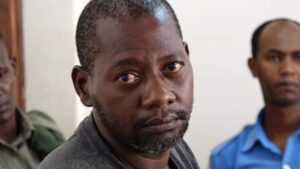
Honduras is known for several bridges that have been constructed over a long period to facilitate movement. The country has numerous rivers, and is often hit by hurricanes and storms, making transport facilities quite vulnerable. One of the bridges that has hit the headlines over the years is the Choluteca Bridge in the city of Choluteca.
Who built the Choluteca Bridge and when was it built?
Choluteca Bridge was constructed by some of the greatest architects in the world. It was built by the United States Army Corps of Engineers in the period between 1935 and 1937. The Choluteca Bridge was later renovated in 1996.
Why was the bridge constructed?
The bridge was intended for the Panamericana road connecting Guatemala and Panama. The engineers and architects used a design that can withstand extreme weather conditions in the susceptible city of Choluteca. This region is often affected by Hurricanes and floods. When all other bridges are destroyed by Hurricanes, the Choluteca Bridge always stays strong.
The bridge to nowhere
Choluteca Bridge is currently referred to as the “the bridge to nowhere” or “the bridge without a river.” This is because the bridge is now standing on dry land, and the river over which it was constructed has changed its course.
In 1998, a strong hurricane known as Hurricane Mitch hit Honduras. All bridges in the country were destroyed except the bridge at Choluteca River. There were so much floods that the roads leading to the bridge were wrecked. Due to its strength and design, the bridge was not affected by the floods. However, the river that was going under it curved away and formed a new channel beside bridge. The floods caused by the hurricane made the river to find a new route. Choluteca River circumvented the strong bridge and left it in the middle of nowhere.
The bridge as a metaphor
The Choluteca Bridge story has been used as a metaphor to explain change in society. Hurricane Mitch caused the river to change course. In every aspect of life – whether business, education, governance, or nursing – change is inevitable. The river had to change direction owing to the prevailing circumstances. People go through change every day. A rainy day could make you change your route to work in the morning. A new software may also make you change your phone. Change can be as simple as altering your sleeping pattern, or as complex as adopting a new programming language. In short, we confront change all the time.
The story of the Choluteca Bridge tells us to accept change. River Choluteca changed course according to the situation at hand, but the bridge remained unbowed. It refused to change. The architects failed to predict change, so the bridge now stands without a river. Similarly, a person who refuses to adapt to change will stand alone in the middle of nowhere. He will become irrelevant with the changing times.
How does the Choluteca Bridge story relate to education?
Our education system is currently built on rote learning, lecturing, silos, and inflexible sitting arrangements. We have stayed in the comfort zone for too long. The inflexible teacher-based teaching approaches were designed to prepare children for military and industrial world in the 1800s. That approach no longer works in the liberal, diplomatic, and technological world.
Things are evolving rapidly, and education systems should be changed to meet the dynamic skill needs of the labor market. We need an enduring but flexible education system; one that can prepare learners for a complex and uncertain world. It is good to have a learner-based approach that enhances adaptability, critical thinking, and active participation in society.
In a highly dynamic world, we need people who can appreciate what is happening in their environments and prepare for change. Students should be taught about emerging issues that will affect the world in the future, such as environmental conservation, climate change, systems approach, robotics, etc.
Teachers have a big role in shaping the attitudes and preparedness of students for change. We are tasked with the duty to nurture future leaders through mentoring and coaching rather than rote learning and memorization.
Do you have breaking news in your community or an inspiring story that you would like to publish? Send it to us through our email: admin@kcsepdf.co.ke.


